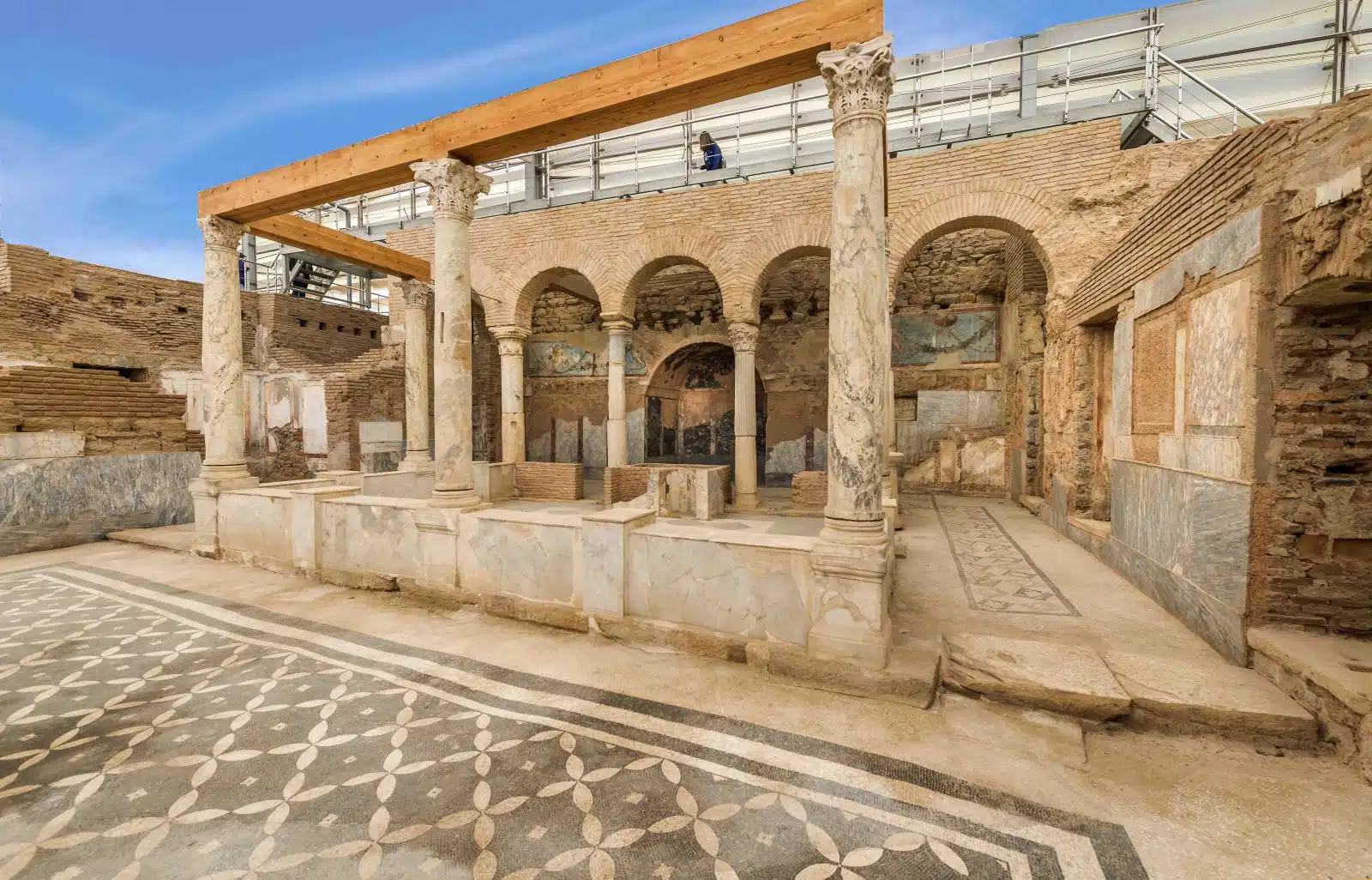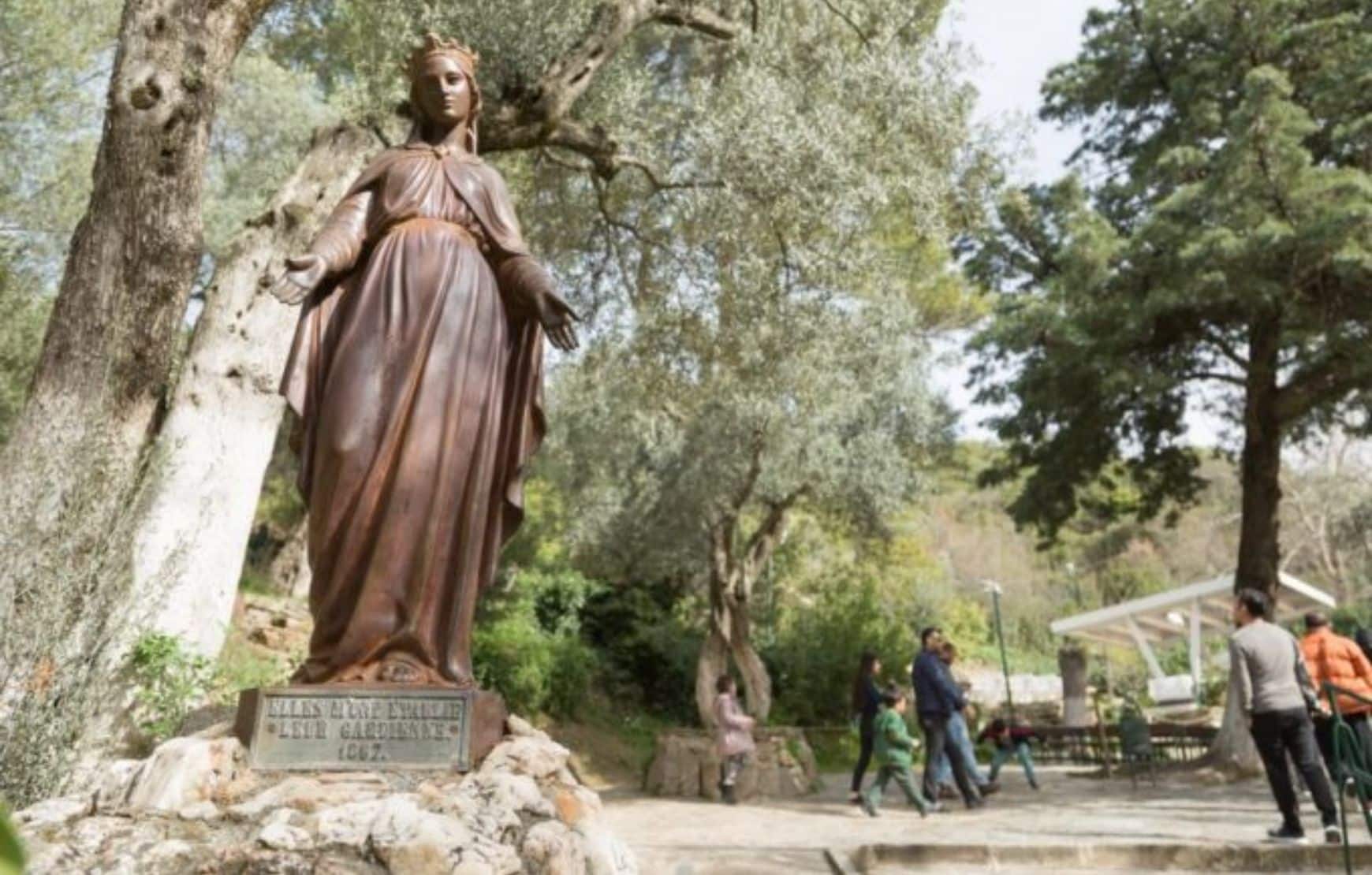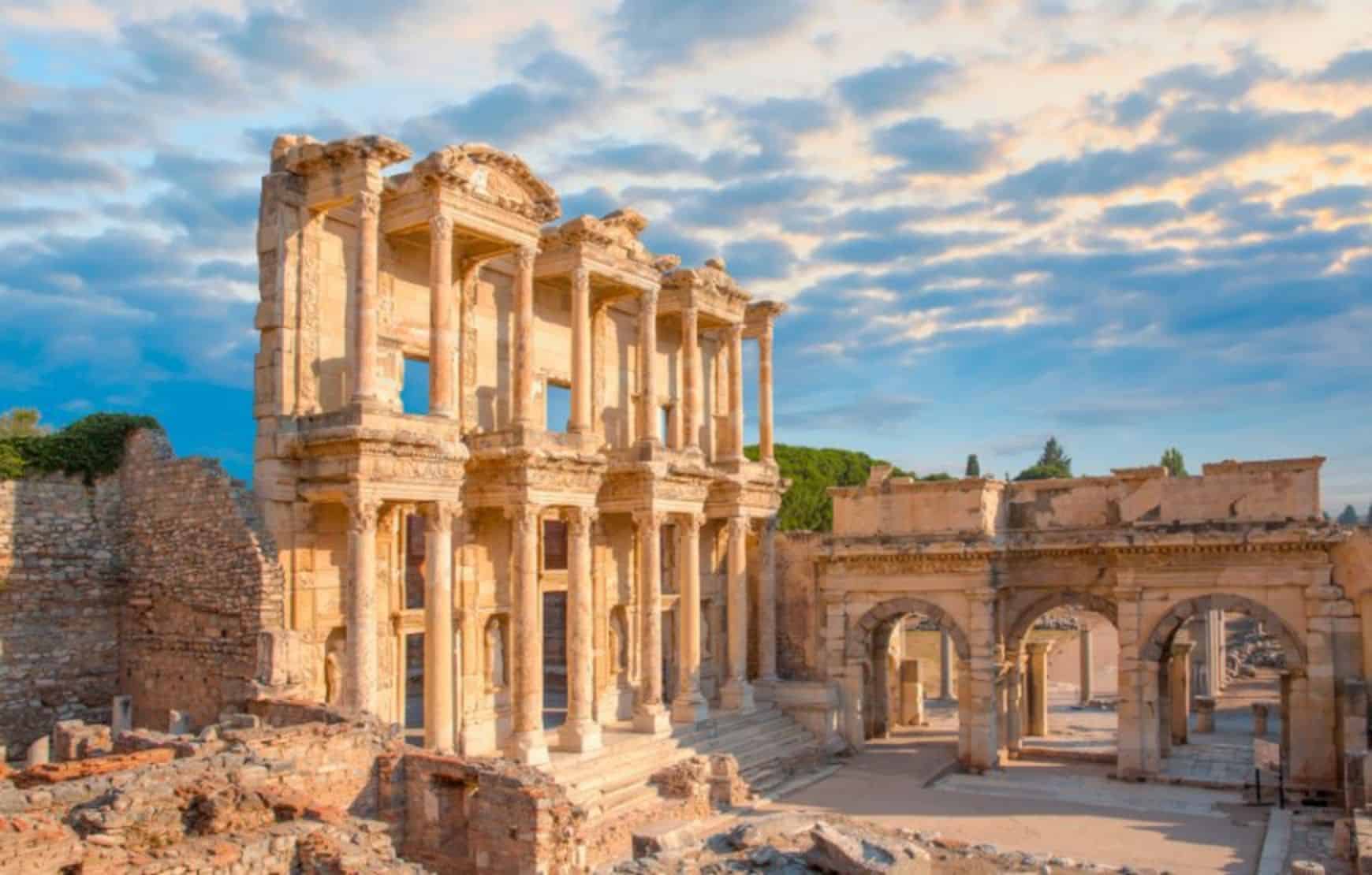If you’re fascinated by ancient civilizations and their remarkable architectural achievements, the Ephesus Terrace Houses are a treasure trove waiting to be discovered. Nestled within the ancient city of Ephesus in present-day Turkey, these well-preserved residential structures offer a glimpse into the opulent lifestyles of the Roman elite. In this article, we’ll take a journey back in time and explore the captivating world of Ephesus Terrace Houses.
What are the Terrace Houses in Ephesus?

The Ephesus Terrace Houses, which consisted of seven housing units, also known as the “Houses of the Rich,” were once opulent residences belonging to the upper class of ancient Ephesus. These houses were part of a prosperous neighborhood and showcased the extravagant lifestyles enjoyed by the elite during the Roman era.
Where are the Terrace Houses in Ephesus?
The Terrace Houses are situated within the archaeological site of Ephesus, specifically within the northeastern section of the ancient city, which is situated in the city of Selcuk in modern-day Turkey. They are positioned on the slopes of Mount Coressus. When exploring Ephesus, visitors can find the Terrace Houses in close proximity to the Library of Celsus and Marble Street, making them easily accessible and an integral part of the overall Ephesus experience.
History of Terrace Houses
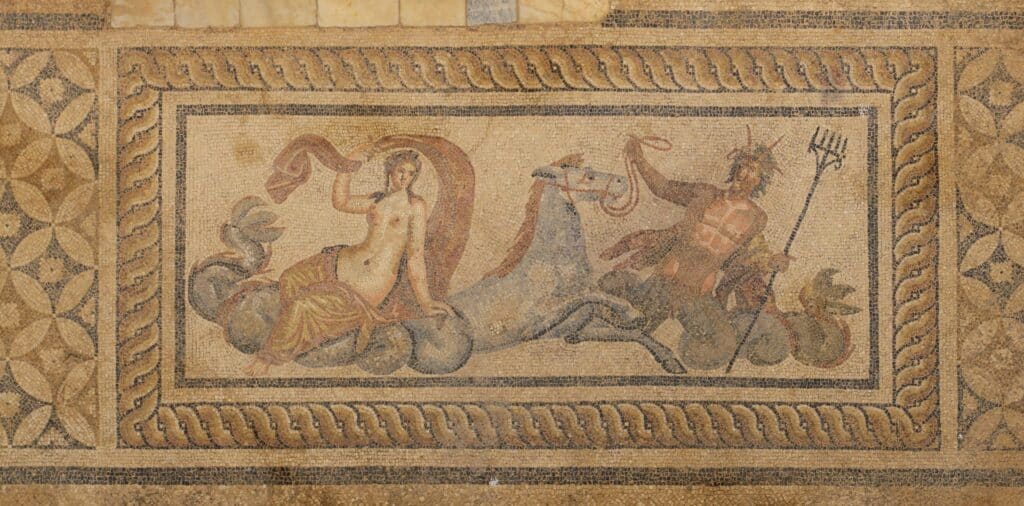
The history of the houses dates back to the Roman period when Ephesus was a thriving city in Asia Minor. These magnificent dwellings were constructed between the 1st and 3rd centuries AD and served as homes for Ephesus’s affluent and influential residents. The houses showcased the luxurious lifestyle of the Roman elite, featuring exquisite architectural designs, lavish interior decorations, and elaborate frescoes. Over time, these opulent residences were buried under layers of sediment, preserving them remarkably well. The excavation and restoration efforts undertaken in recent years have unveiled the houses in their former glory, offering a captivating glimpse into the social and cultural aspects of ancient Roman life. Through the houses, we can witness the sophistication and grandeur of the past, allowing us to unravel the stories and secrets of the wealthy inhabitants who once called Ephesus their home.
Architectural Marvels
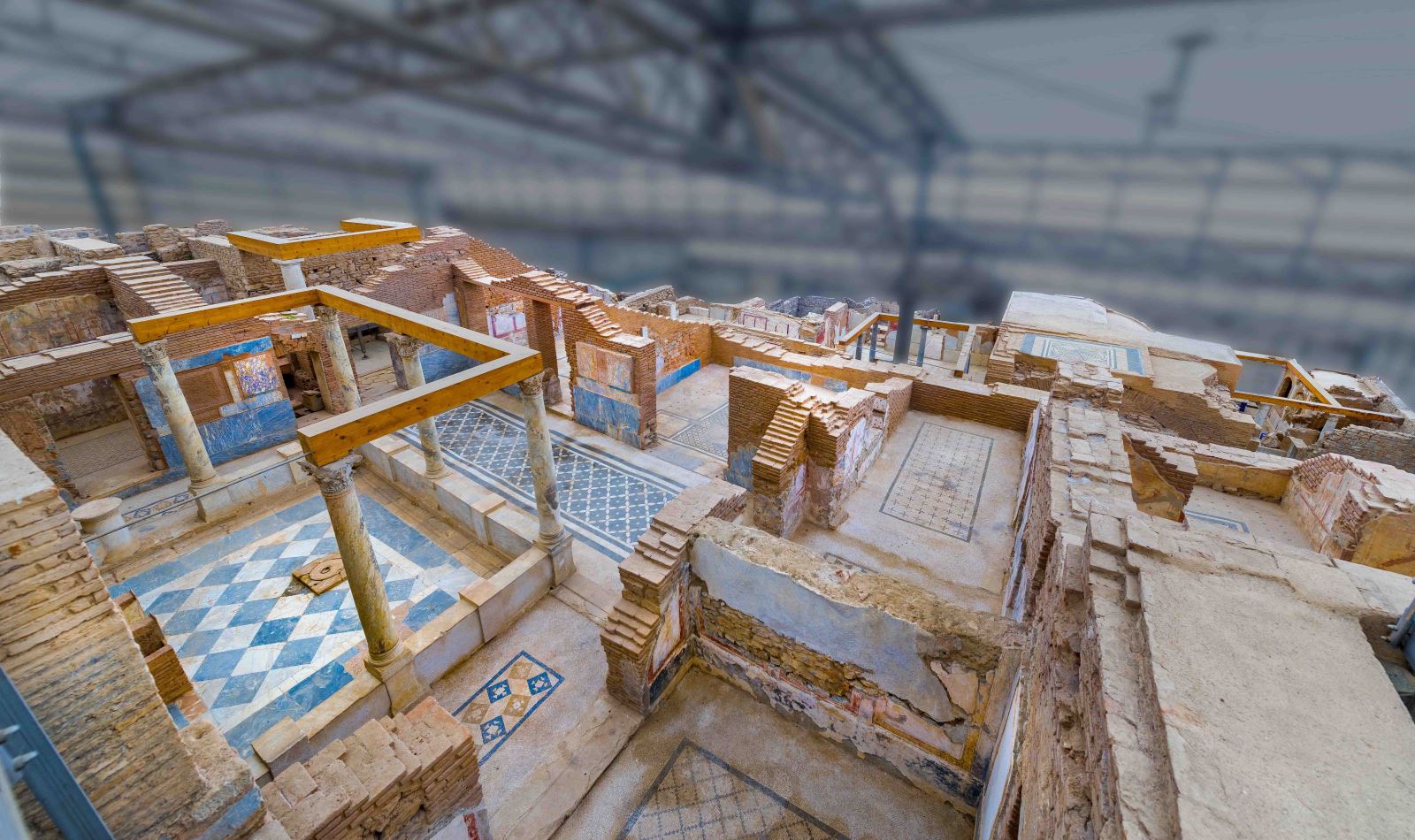
The houses are renowned for their exquisite architecture and intricate interior design. The houses were constructed meticulously, featuring beautiful mosaics, frescoes, marble floors, and well-preserved decorative elements. Each house consisted of multiple levels, connected by staircases and adorned with courtyards, gardens, and luxurious amenities.
Interior Design and Decoration
The interiors of the houses boasted exquisite craftsmanship and intricate detailing. Lavish frescoes adorned the walls, depicting mythological scenes, portraits, and everyday life. Elaborate mosaics covered the floors, showcasing the mastery of ancient artisans.
Mosaics and Frescoes
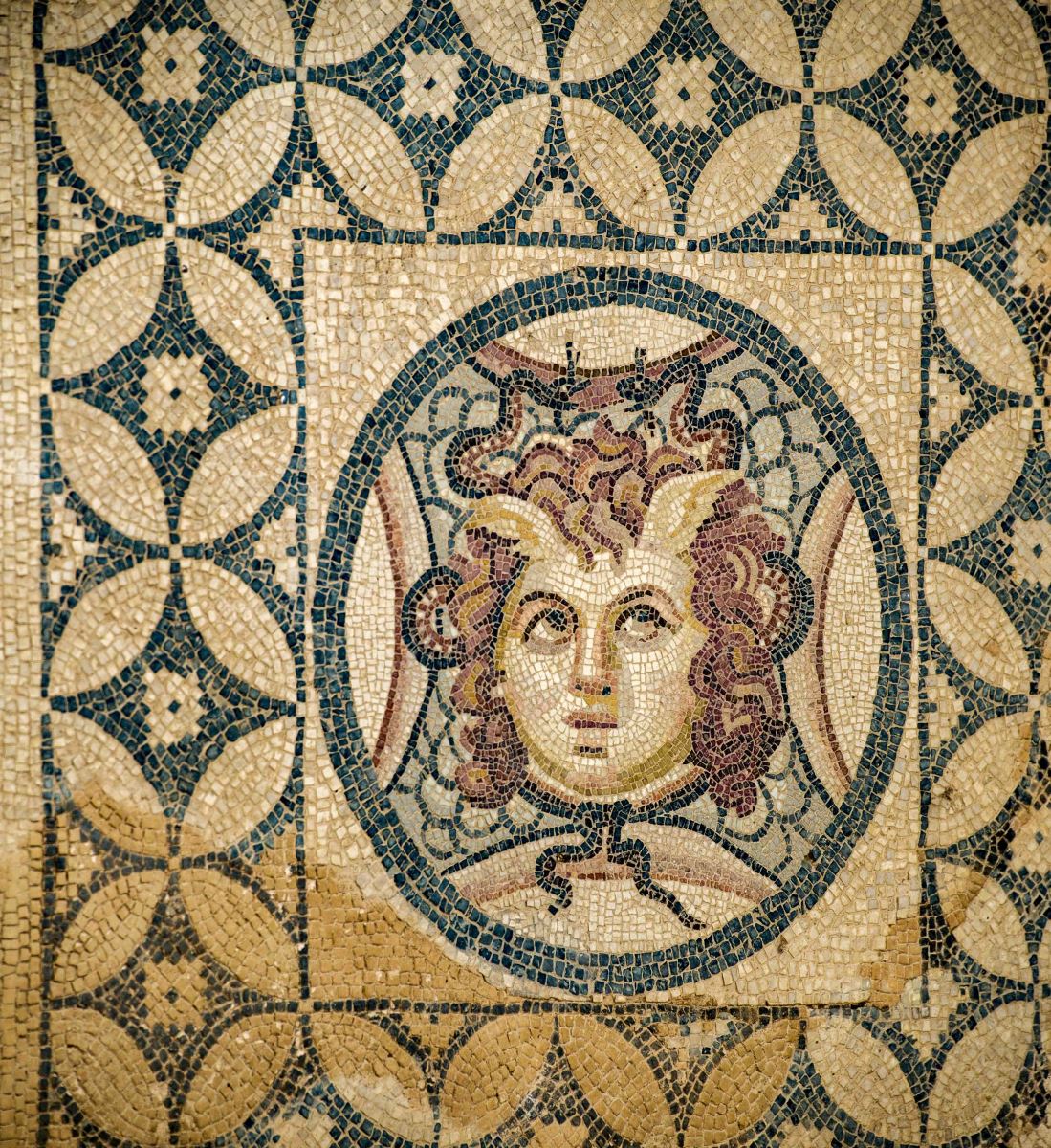
The mosaics and frescoes found within the Terrace Houses are a testament to the skill and creativity of the ancient craftsmen. The intricate designs and vibrant colors have survived the test of time, providing a vivid glimpse into the era’s artistic tastes and cultural influences.
Rich Cultural Heritage
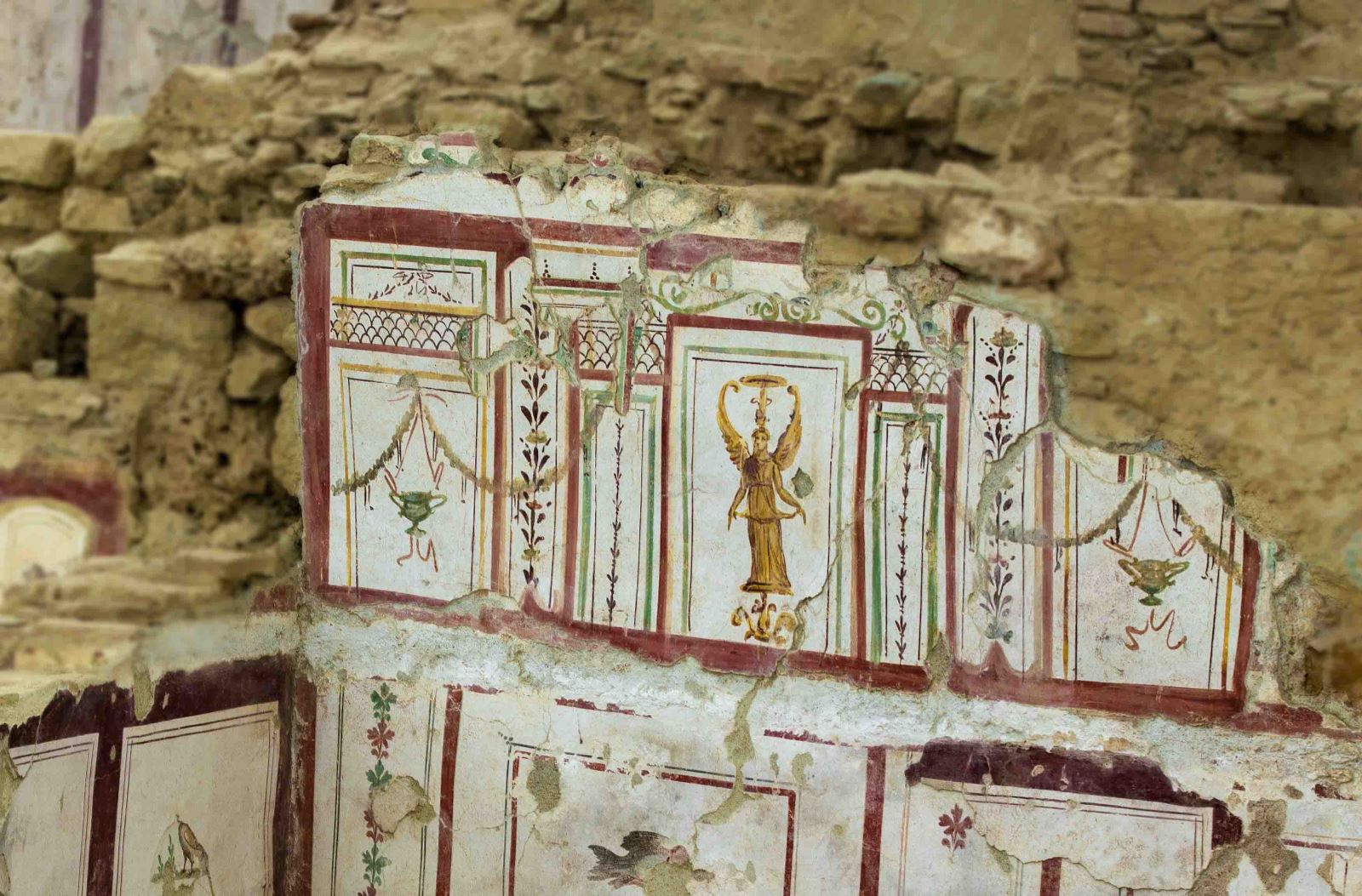
The houses offer a unique glimpse into the daily lives of the wealthy inhabitants of ancient Ephesus. As you wander through these well-preserved ruins, you’ll discover various rooms that were once bustling with activity. From reception halls to dining rooms, bedrooms to kitchens, every corner of these houses tells a story of prosperity, elegance, and refined taste.
The Daily Life of the Elite
Exploring the Terrace Houses offers a unique insight into the daily lives of the Roman elite. The houses featured sophisticated heating systems, indoor plumbing, and private baths, showcasing the era’s advanced engineering and luxurious amenities. These residences were the epitome of comfort and opulence.
The Importance of Terrace Houses
The Terrace Houses played a significant role in the social fabric of ancient Ephesus. They were not only symbols of affluence but also served as centers for intellectual and cultural exchange. The houses were often venues for social gatherings, where influential figures would discuss politics, philosophy, and the arts. They served as a hub for the elite to showcase their wealth, influence, and refined lifestyle.
Discovering the Terrace Houses
When was the Terrace Houses discovered?
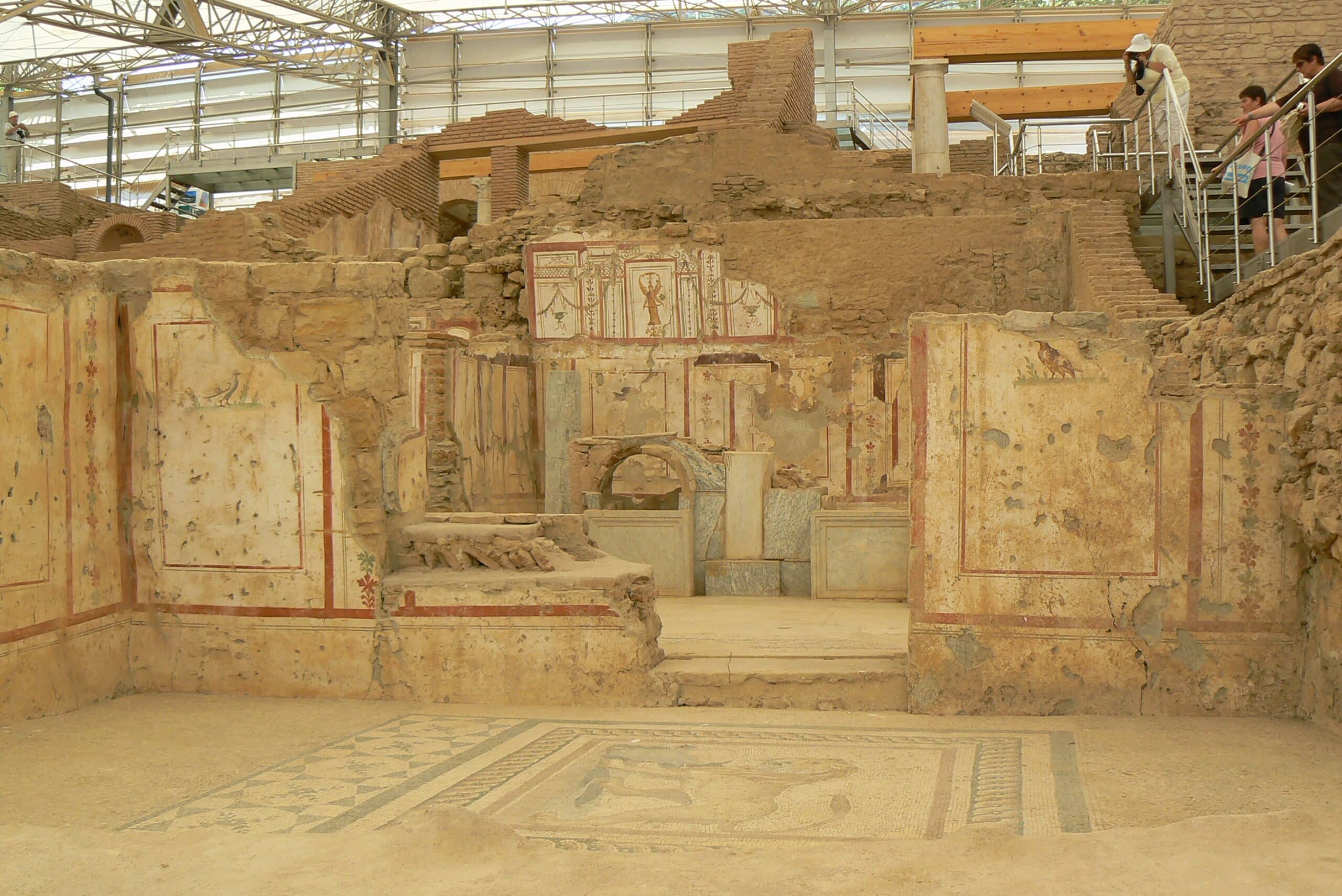
Terrace House, which consisted of seven housing units, connected the upper and lower city. Hermann Vetters undertook the first excavations between 1967 and 1984. Evaluating finds such as coins or pottery allowed the identification of four main building phases. The earliest structures connected to housing in this area are from the 1st century BC; however, these early structures could not be identified over the entire area. After extensive destruction caused by an earthquake in the 3rd quarter of the 3rd century AD, the Terrace House 2 was abandoned as a high-status residential housing unit.
(For a more extensive chronology, see Krinzinger 2002; the four building phases in Unit 5: Adenstedt 2005, 12–13.)
How much is the entrance ticket for the Terrace Houses?
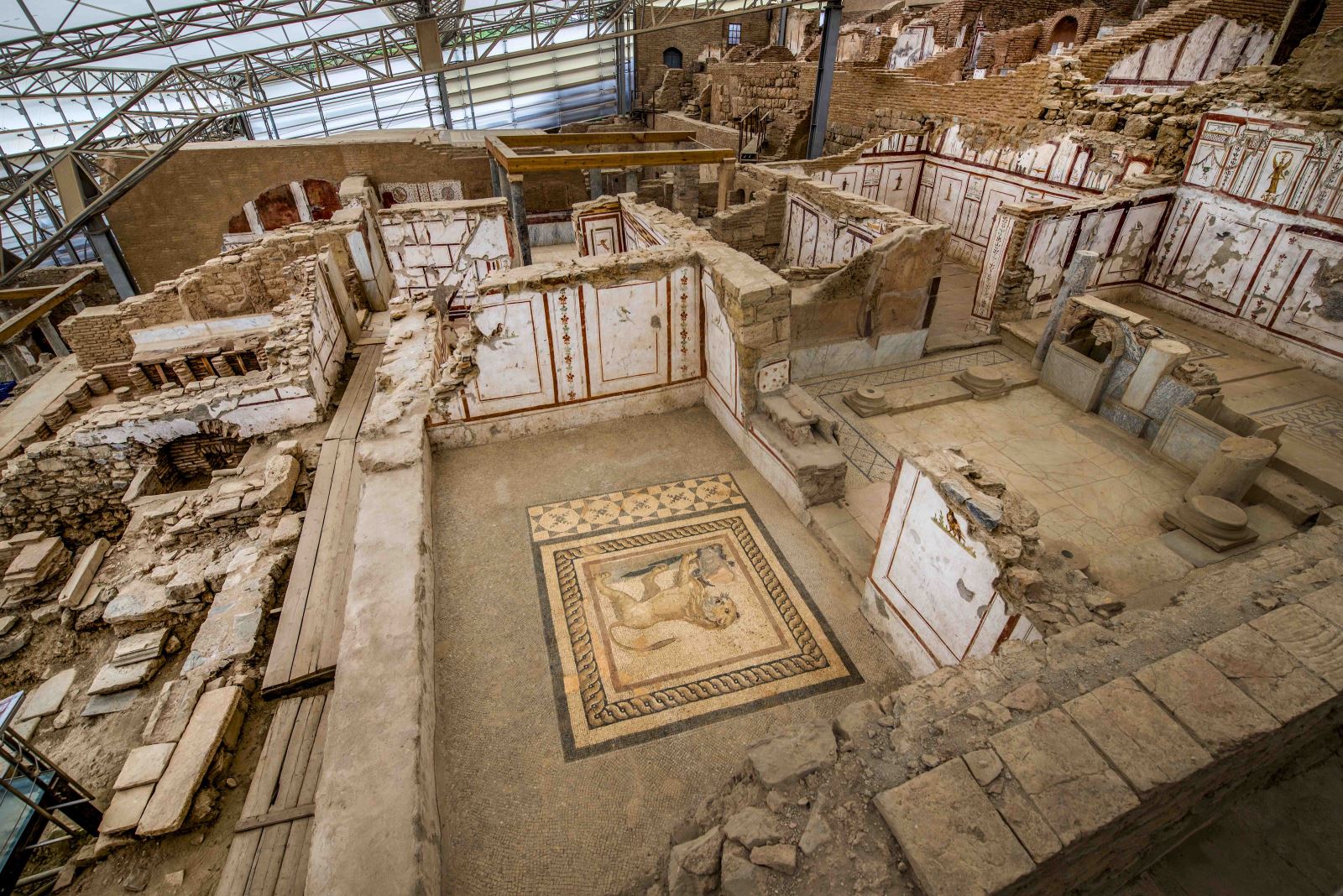
You can enter an extra 15 Euros (2025) entrance fee for the Terrace Houses located in the Ancient City of Ephesus. Terrace Houses entrance is included in the “Museum Pass Turkey” or “Museum Pass Aegean.” These passes grant you access to various museums, historical sites, and archaeological sites in Turkey, including Ephesus.
Are Terrace Houses included in Turkey Museum Pass?
Yes, the Terrace Houses in Ephesus are included in the “Museum Pass Turkey” or “Museum Pass Aegean.” With these passes, you can access various museums, historical sites, and archaeological sites throughout Turkey, including the Terrace Houses within the Ephesus complex.
Visiting the houses with a tour
A guided tour of the Terrace Houses of Ephesus offers a captivating and enriching experience. Guided Ephesus tours provide visitors with expert knowledge and insights into these ancient residences’ historical and cultural significance. Led by knowledgeable guides, visitors can explore the various rooms, courtyards, and corridors of the Terrace Houses, gaining a deeper understanding of the opulent lifestyle enjoyed by the Roman elite. Guides often share fascinating details about the architectural features, intricate frescoes, and mosaic floors, bringing the ancient past to life. With a guided tour, visitors can immerse themselves in the stories and secrets of the Terrace Houses, appreciating the remarkable preservation of these ancient dwellings and gaining a greater appreciation for the craftsmanship and artistic achievements of the Roman period.
The Ephesus Terrace Houses stand as a testament to ancient Roman society’s opulence, grandeur, and cultural richness. These remarkable dwellings offer a unique window into the lives of the affluent citizens of Ephesus, showcasing their architectural prowess and artistic finesse. As you explore the intricacies of the terrace houses, you’ll find yourself transported back in time, marveling at the wealth of historical treasures that have been unearthed. So, make sure to include a visit to the Ephesus Terrace Houses on your bucket list and embark on an unforgettable journey into the captivating world of ancient Roman luxury.
Do not forget to read A Comprehensive Guide to Ephesus Tour: Everything You Need to Know before a visit to Ephesus!


